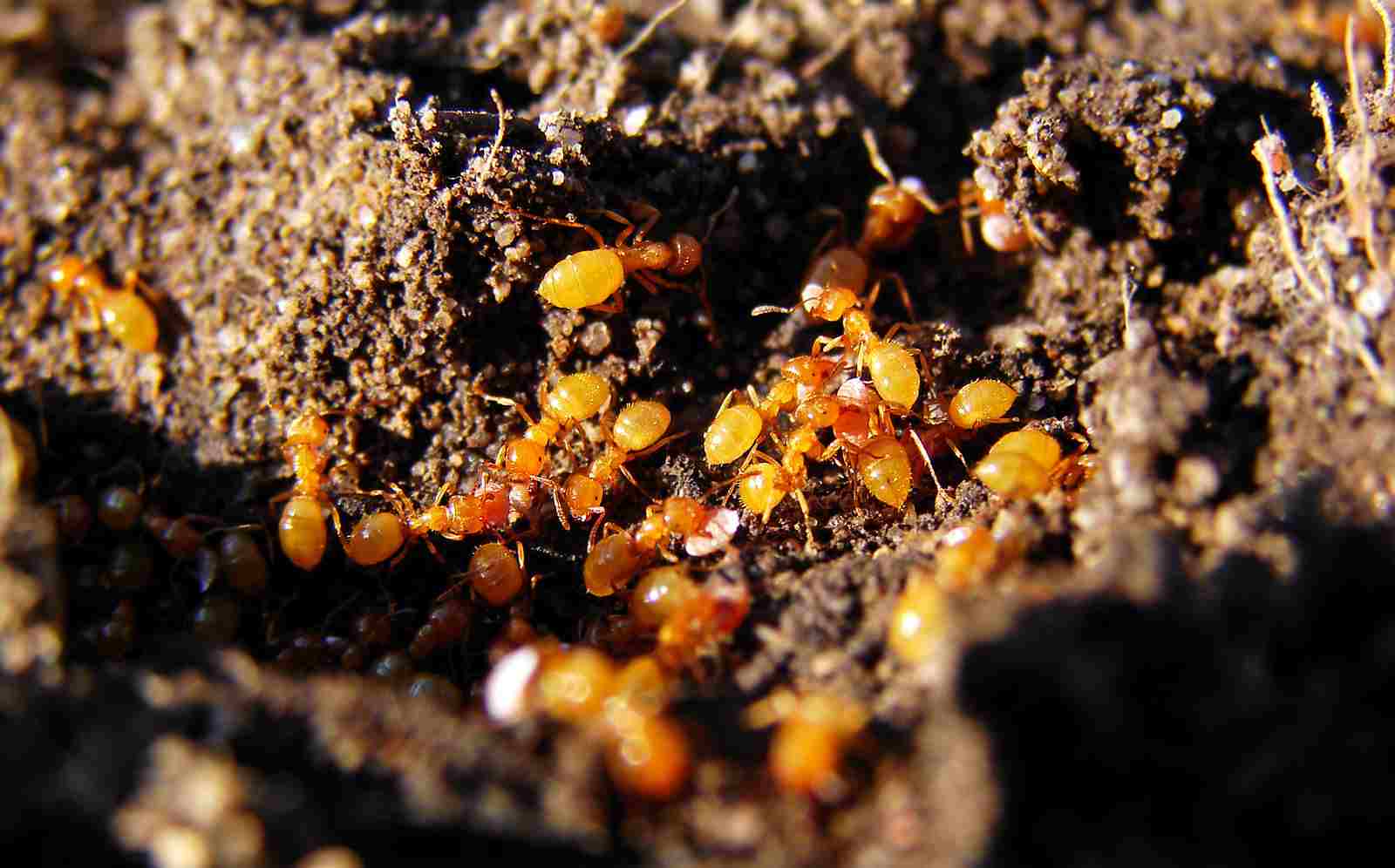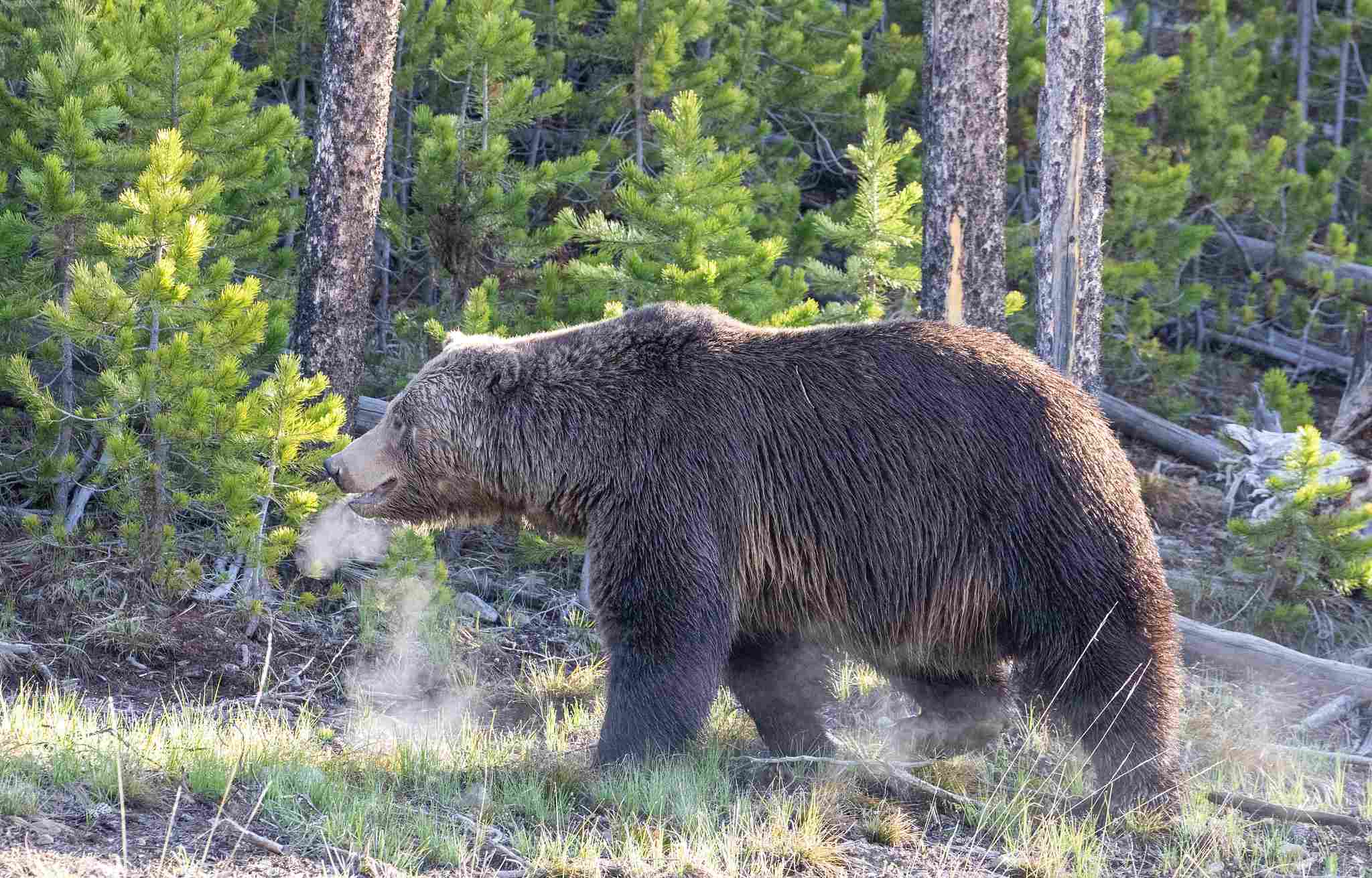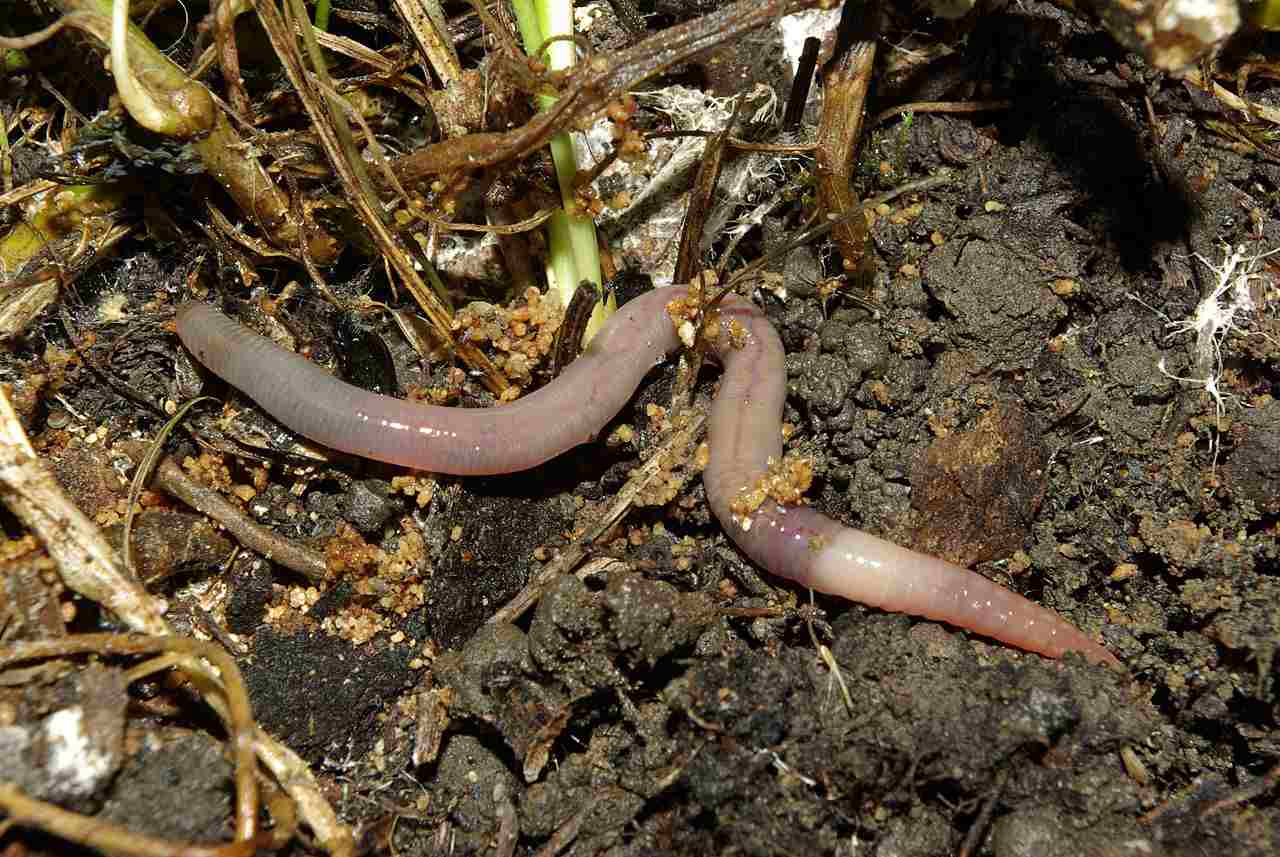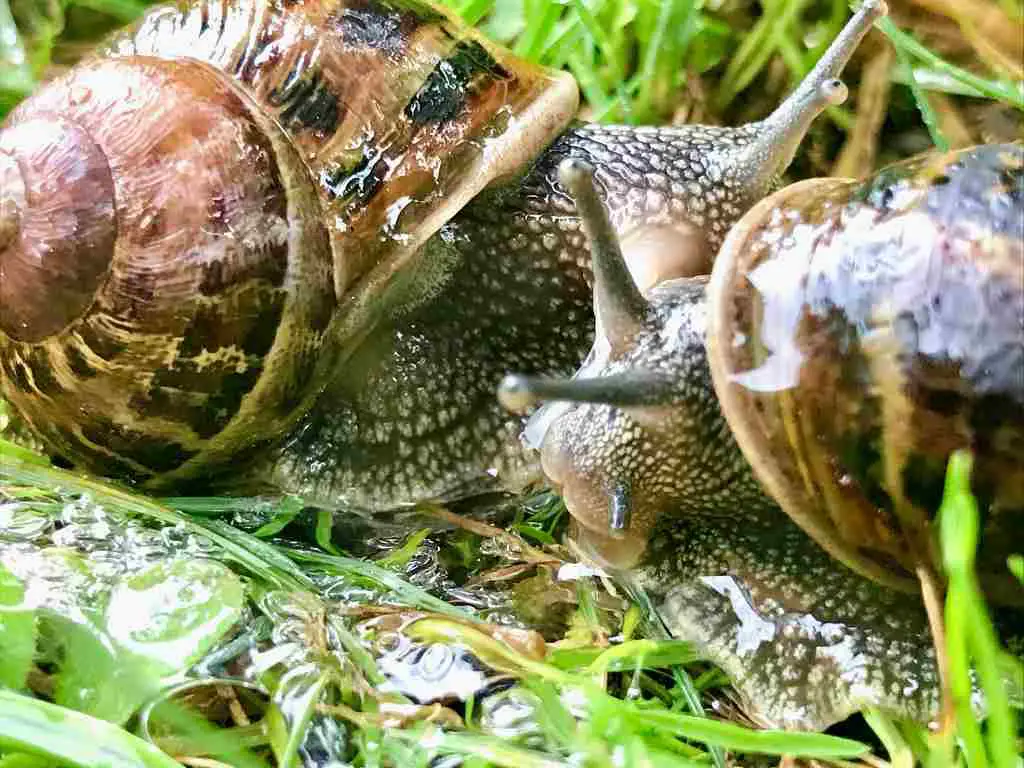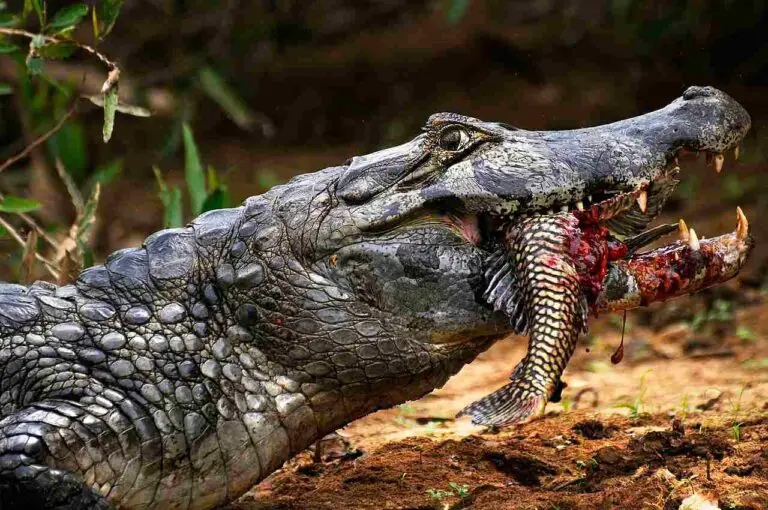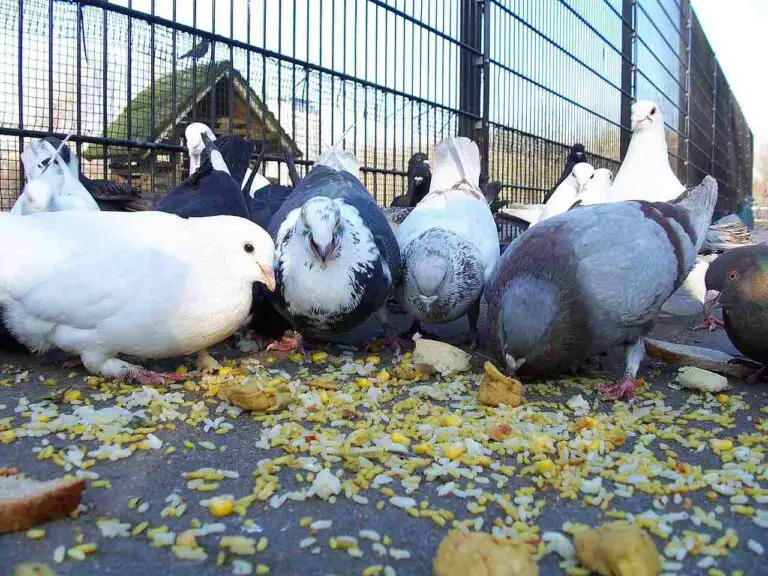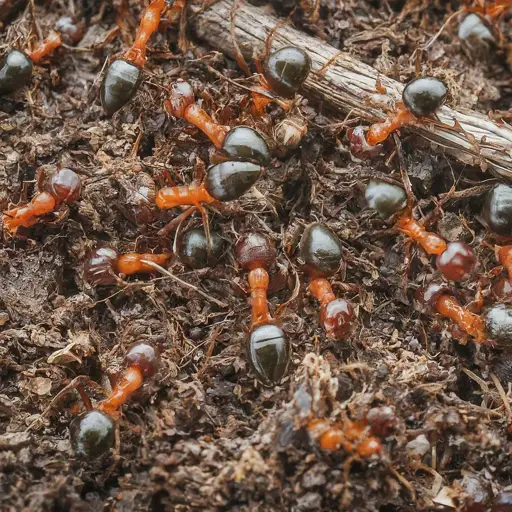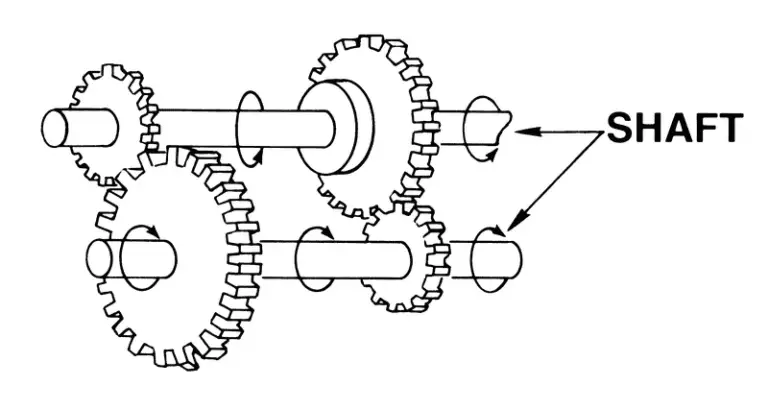19+ Detritivores In Yellowstone National Park Discussed
Examples of detritivores in Yellowstone National Park are earthworms, millipedes, springtails, and isopods. These organisms play a key role in decomposing organic matter, contributing to soil health and nutrient cycling. Some, like termites and ants, create tunnels that aerate the soil, while others, such as crane fly larvae, contribute to nutrient cycling in aquatic environments. Additionally, detritivores like beetles, slugs, and snails are important prey for various predators, indicating their vital role in maintaining Yellowstone’s ecological balance.
1. Earthworms
Earthworms play a pivotal role in Yellowstone National Park’s ecosystem by contributing to soil health and nutrient cycling. These detritivores break down organic matter, such as decaying leaves and plant debris, into smaller particles, enriching the soil and making nutrients more accessible to plants. Their burrowing activities aerate the soil, enhancing its structure and promoting water infiltration. As they move through the earth, earthworms also help mix soil layers, contributing to a more uniform distribution of organic and inorganic components. This activity supports plant growth, which in turn sustains the park’s diverse wildlife.
In Yellowstone, earthworms are vital to the decomposition process, forming a crucial link in the food web. Their presence supports a wide variety of organisms, from birds and small mammals that feed on them to the microorganisms that thrive in the enriched soil they create. By breaking down organic matter, earthworms help to sequester carbon in the soil, which is beneficial for the park’s overall ecological balance. Despite their small size, the impact of earthworms in maintaining the park’s health and vitality is substantial, underscoring their importance in this unique ecosystem.
2. Millipedes
Millipedes are among the key decomposers in Yellowstone National Park, often seen scuttling through leaf litter and forest debris. These multi-legged detritivores feed primarily on decaying organic matter, breaking it down into simpler compounds. By consuming dead plant material, millipedes help recycle nutrients back into the ecosystem, playing a significant role in soil formation and health. This activity is critical for sustaining the park’s lush vegetation, which in turn supports a wide range of wildlife.
In addition to their role in decomposition, millipedes contribute to soil aeration and structure through their burrowing behavior. As they tunnel through the ground, they create small passages that allow for air and water movement, benefiting root systems and other soil organisms. Millipedes are also a food source for various predators in the park, including birds and small mammals, illustrating their importance in the food web. Overall, these creatures are an essential component of the natural recycling process that maintains Yellowstone’s unique ecosystem.
3. Springtails
Springtails are tiny, jumping insects that play a crucial role in Yellowstone National Park’s decomposition process. These diminutive detritivores feed on decaying plant material, fungi, and other organic matter, contributing to the breakdown of leaf litter and forest detritus. Through their feeding activities, springtails help to recycle nutrients back into the soil, fostering a fertile environment for plant growth. They are also instrumental in controlling fungal growth, preventing overgrowth that could harm vegetation.
In addition to their role in decomposition, springtails are an important food source for a variety of predators, including birds, amphibians, and spiders. Their presence in the park indicates a healthy and balanced ecosystem, as they are sensitive to environmental changes and can be an indicator of soil health. The unique ability of springtails to “spring” away from predators, using a specialized appendage called the furcula, adds to their fascinating nature and adaptability in the diverse ecosystems of Yellowstone.
4. Isopods
Isopods, commonly known as pillbugs or sowbugs, are among the less conspicuous but highly effective decomposers in Yellowstone National Park. These small crustaceans are often found in damp areas, feeding on decaying plant material and other organic matter. Isopods play a crucial role in breaking down leaf litter and other detritus, facilitating the recycling of nutrients back into the soil. This activity helps maintain soil health and promotes plant growth, supporting the park’s rich biodiversity.
The contribution of isopods extends beyond decomposition. Through their burrowing behavior, they aid in soil aeration and moisture regulation, creating a suitable environment for plant roots and other soil organisms. Isopods are also a valuable food source for various predators, such as birds, amphibians, and small mammals. Their presence in Yellowstone underscores the interconnectedness of the park’s ecosystem, illustrating how even the smallest creatures play a vital role in maintaining the ecological balance.
5. Ants
Ants are a diverse and highly adaptable group of detritivores that contribute significantly to Yellowstone National Park’s ecosystem. These industrious insects are known for their complex social structures and cooperative behavior, which enables them to accomplish a variety of ecological tasks. Ants are excellent decomposers, breaking down organic matter such as dead insects, plant material, and other detritus. This process helps to recycle nutrients back into the soil, supporting plant growth and maintaining soil health.
Beyond their role in decomposition, ants are integral to the park’s food web and ecosystem engineering. They create intricate underground tunnels that aerate the soil and facilitate water movement, benefiting plant roots and other soil organisms. Ants are also crucial in controlling other insect populations, serving as predators to various pests. Additionally, they are a food source for many predators, including birds and small mammals, highlighting their importance in the broader ecological context of Yellowstone.
6. Beetles (Various Species)
Beetles are one of the most diverse groups of detritivores in Yellowstone National Park, encompassing a wide range of species with varied roles in the ecosystem. Many beetles specialize in decomposing dead plant material, breaking it down into simpler compounds that enrich the soil. Some beetles, such as carrion beetles, focus on animal remains, helping to recycle nutrients and clean up the environment. This decomposition process is crucial for maintaining soil health and supporting plant growth throughout the park.
In addition to their role in decomposition, beetles serve as a significant food source for other wildlife, including birds, amphibians, and small mammals. Certain beetles, like the bark beetles, also play a role in controlling tree populations, although this can sometimes lead to negative impacts if the beetle population grows too large. Overall, the diversity of beetles in Yellowstone reflects the complexity of the park’s ecosystems, with each species contributing uniquely to the ecological balance and nutrient cycling.
7. Mites
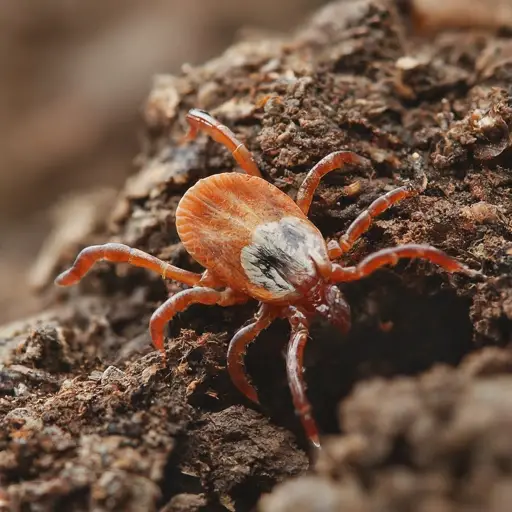
Mites are minute arachnids that are often overlooked but play an essential role in the decomposition process within Yellowstone National Park. These tiny detritivores can be found in soil, leaf litter, and on plants, where they feed on decaying organic matter, fungi, and other small organisms. By breaking down complex organic materials, mites contribute to nutrient cycling and soil health, supporting the growth of plants and other vegetation in the park.
Besides their role in decomposition, mites are crucial in controlling fungal growth, preventing overpopulation that could harm the ecosystem. They also serve as prey for various predators, including birds and small mammals, thus forming an important link in the food web. Mites’ diversity in Yellowstone showcases the intricate relationships within the park’s ecosystems, where even the smallest organisms have a significant impact on maintaining the balance and health of the environment.
8. Sowbugs
Sowbugs, similar to isopods, are small crustaceans that play a significant role in decomposing organic matter in Yellowstone National Park. These detritivores are commonly found in damp and shaded areas, where they feed on decaying leaves, wood, and other plant material. Sowbugs are vital for breaking down organic matter into smaller components, facilitating nutrient cycling and enhancing soil health. Their presence supports a healthy ecosystem, promoting plant growth and providing resources for other organisms.
In addition to their role in decomposition, sowbugs contribute to soil aeration through their burrowing activities. They create small tunnels that allow air and water to penetrate the soil, benefiting plant roots and other soil organisms. Sowbugs are also an important food source for various predators in the park, such as birds, amphibians, and small mammals. The activities of sowbugs highlight the complex interactions within Yellowstone’s ecosystems, demonstrating how even small creatures play a vital role in maintaining the park’s ecological balance.
9. Termites
Termites are well-known for their role in breaking down wood and other cellulose-based materials in Yellowstone National Park. These social insects form large colonies and work collectively to decompose dead wood, facilitating the recycling of nutrients back into the ecosystem. Termites are particularly important in forested areas, where they break down fallen trees and other woody debris, contributing to soil formation and promoting nutrient cycling.
In addition to their decomposition activities, termites contribute to soil aeration through their extensive tunneling systems. These tunnels create pathways for air and water movement, benefiting soil health and promoting plant growth. Termites also serve as a key food source for various predators, including birds, small mammals, and reptiles. Their presence in Yellowstone underscores the interconnectedness of the park’s ecosystems, with each species playing a unique role in maintaining the ecological balance.
10. Slugs
Slugs are common decomposers in Yellowstone National Park, playing a key role in breaking down organic matter, particularly plant material. These gastropods are often found in damp and shaded areas, where they feed on decaying leaves, dead plants, and other detritus. By decomposing this organic matter, slugs help to recycle nutrients back into the soil, promoting plant growth and supporting the park’s lush vegetation. This process is crucial for maintaining a healthy ecosystem and sustaining a diverse range of wildlife.
Besides their role in decomposition, slugs contribute to soil structure through their movement across the ground. Their mucus trails help retain moisture in the soil, creating a suitable environment for plant roots and other soil organisms. Slugs are also a valuable food source for various predators, including birds, reptiles, and small mammals. The presence of slugs in Yellowstone indicates a healthy ecosystem, where even the smallest creatures play a significant role in maintaining ecological balance and promoting biodiversity.
11. Snails
Snails, like slugs, are gastropods that play a vital role in decomposing organic matter in Yellowstone National Park. These detritivores are often found in moist and shaded environments, where they feed on decaying leaves, plants, and other organic material. By breaking down this matter, snails contribute to nutrient cycling, enriching the soil, and promoting plant growth. This process is crucial for maintaining a healthy ecosystem and supporting a wide range of plant and animal species within the park.
In addition to their role in decomposition, snails contribute to soil health and structure through their movement and burrowing activities. Their shells offer protection, allowing them to traverse the terrain and contribute to soil aeration without damaging plant roots. Snails also serve as a significant food source for various predators, including birds, amphibians, and small mammals. The presence of snails in Yellowstone indicates a thriving and balanced ecosystem, where the interconnectedness of all organisms is key to the park’s ecological success.
12. Crane Fly Larvae
Crane fly larvae, commonly known as leatherjackets, play an essential role in the decomposition process in Yellowstone National Park. These larvae typically reside in soil or aquatic environments, where they feed on decaying organic matter, such as plant roots, leaves, and other debris. By consuming and breaking down these materials, crane fly larvae contribute to nutrient cycling and soil health, promoting plant growth and maintaining the ecological balance in the park’s diverse ecosystems.
In addition to their role in decomposition, crane fly larvae serve as a food source for various predators in the park, including birds, fish, and small mammals. This places them at an important point in the food web, illustrating their contribution to Yellowstone’s biodiversity. The presence of crane fly larvae in different habitats within the park underscores their adaptability and the intricate relationships between various organisms, highlighting how each species plays a role in sustaining the broader ecosystem.
13. Stonefly Larvae
Stonefly larvae are a critical component of Yellowstone National Park’s aquatic ecosystems, where they play a significant role in the decomposition of organic matter. These larvae are typically found in fast-flowing streams and rivers, feeding on decaying plant material and other detritus. By breaking down this organic matter, stonefly larvae contribute to nutrient cycling in aquatic environments, supporting the growth of algae and other aquatic plants, which in turn sustain a diverse range of fish and other wildlife.
Beyond their role in decomposition, stonefly larvae are an important food source for various aquatic predators, including fish, amphibians, and other invertebrates. This places them within a key ecological niche, forming a link between decomposing organic matter and the larger food web in Yellowstone’s aquatic habitats. The presence of stonefly larvae indicates a healthy and thriving ecosystem, where clean water and balanced nutrient levels support a rich diversity of life.
14. Caddisfly Larvae
Caddisfly larvae are known for their unique case-building behavior, constructing protective cases from materials such as twigs, pebbles, and leaves. These aquatic larvae play a vital role in the decomposition process within Yellowstone National Park, feeding on decaying organic matter found in streams and rivers. By consuming and breaking down this matter, caddisfly larvae contribute to nutrient cycling and promote a healthy aquatic environment, which supports a variety of plant and animal life in the park’s waterways.
Besides their role in decomposition, caddisfly larvae are a crucial part of the food web in Yellowstone’s aquatic ecosystems. They serve as a food source for fish, amphibians, and other aquatic predators, forming a connection between decomposing organic matter and the broader ecological network. The presence of caddisfly larvae in Yellowstone’s streams and rivers is an indicator of good water quality and a balanced ecosystem, highlighting the importance of these unique detritivores in maintaining ecological health and supporting biodiversity.
15. Mayfly Larvae
Mayfly larvae, or nymphs, are a significant component of Yellowstone National Park’s aquatic ecosystems, where they play a crucial role in decomposing organic matter. These larvae are typically found in clean, fast-flowing streams and rivers, where they feed on detritus and decaying plant material. By breaking down this organic matter, mayfly larvae contribute to nutrient cycling and promote a healthy aquatic environment, supporting the growth of algae and other plants, which in turn sustains a variety of fish and other aquatic life.
In addition to their role in decomposition, mayfly larvae are an important food source for fish and other aquatic predators in Yellowstone. This positions them as a key component of the park’s food web, connecting the breakdown of organic matter with the broader ecosystem. The presence of mayfly larvae in Yellowstone’s waterways is often used as an indicator of water quality, as these larvae are sensitive to pollution and environmental changes. Their abundance underscores the importance of maintaining clean, healthy aquatic habitats in the park.
16. Blackfly Larvae
Blackfly larvae are common in Yellowstone National Park’s streams and rivers, where they play a significant role in the decomposition process. These larvae attach themselves to rocks and other submerged surfaces, feeding on organic matter suspended in the water. By filtering and consuming this detritus, blackfly larvae contribute to nutrient cycling in aquatic environments, promoting a healthy ecosystem that supports a diverse range of plant and animal life.
Blackfly larvae also serve as a vital food source for a variety of aquatic predators, including fish, amphibians, and other invertebrates. Their role in the food web is essential, as they provide a link between the decomposing organic matter in the water and the broader ecological network in Yellowstone’s waterways. The presence of blackfly larvae in the park’s streams and rivers indicates a healthy aquatic environment, where nutrient levels are balanced, and water quality is maintained. This reflects the intricate relationships within Yellowstone’s ecosystems, where each species plays a unique and important role in sustaining ecological health and diversity.
*Summary of Detritivores in Yellowstone National Park
-
Earthworms
-
Decompose organic matter, contributing to soil health and nutrient cycling.
-
Aerate the soil, supporting plant growth and diverse wildlife.
-
-
Millipedes
-
Break down decaying plant material and contribute to soil aeration.
-
Serve as a food source for birds and small mammals.
-
-
Springtails
-
Decompose organic matter and control fungal growth.
-
Provide food for predators like birds and amphibians.
-
-
Isopods
-
Feed on decaying plant material, aiding in nutrient cycling.
-
Contribute to soil aeration and are prey for various predators.
-
-
Ants
-
Break down organic matter and create underground tunnels.
-
Control insect populations and serve as prey for other wildlife.
-
-
Beetles (Various Species)
-
Specialize in decomposing plant and animal material.
-
Serve as a key food source for other animals in the park.
-
-
Mites
-
Feed on decaying organic matter and control fungal growth.
-
Serve as a food source for birds and small mammals.
-
-
Sowbugs
-
Decompose organic matter and contribute to soil aeration.
-
Provide food for birds, amphibians, and small mammals.
-
-
Termites
-
Break down wood and cellulose-based materials.
-
Create tunnels that aerate the soil and are prey for other animals.
-
-
Slugs
-
Feed on decaying plant material and contribute to soil structure.
-
Are a valuable food source for various predators.
-
-
Snails
-
Decompose organic matter, enriching the soil.
-
Serve as prey for birds, amphibians, and small mammals.
-
-
Crane Fly Larvae
-
Decompose organic matter in aquatic environments.
-
Serve as a food source for birds, fish, and small mammals.
-
-
Stonefly Larvae
-
Decompose plant material in fast-flowing streams and rivers.
-
Provide food for aquatic predators like fish and amphibians.
-
-
Caddisfly Larvae
-
Decompose organic matter in aquatic environments.
-
Serve as a food source for fish, amphibians, and other aquatic predators.
-
-
Mayfly Larvae
-
Decompose plant material in aquatic environments.
-
Are a key food source for fish and other aquatic predators.
-
-
Blackfly Larvae
-
Feed on organic matter in aquatic environments, contributing to nutrient cycling.
-
Serve as a food source for various aquatic predators.
-
| Species | Role |
| Earthworms |
Decompose organic matter, aerate soil, support plant growth and wildlife.
|
| Millipedes |
Break down decaying plant material, contribute to soil aeration, feed other animals.
|
| Springtails |
Decompose organic matter, control fungal growth, serve as prey for birds and amphibians.
|
| Isopods |
Feed on decaying plant material, aerate soil, prey for various predators.
|
| Ants |
Break down organic matter, create underground tunnels, control insect populations.
|
| Beetles |
Decompose plant and animal material, serve as a key food source for other wildlife.
|
| Mites |
Decompose organic matter, control fungal growth, prey for birds and small mammals.
|
| Sowbugs |
Decompose organic matter, contribute to soil aeration, provide food for various predators.
|
| Termites |
Break down wood and cellulose-based materials, aerate soil, prey for other animals.
|
| Slugs |
Feed on decaying plant material, contribute to soil structure, valuable food source.
|
| Snails |
Decompose organic matter, serve as prey for birds, amphibians, and small mammals.
|
| Crane Fly Larvae |
Decompose organic matter in aquatic environments, food source for birds and fish.
|
| Stonefly Larvae |
Decompose plant material in fast-flowing streams and rivers, provide food for fish.
|
| Caddisfly Larvae |
Decompose organic matter in aquatic environments, feed fish and other aquatic predators.
|
| Mayfly Larvae |
Decompose plant material in aquatic environments, food source for fish and predators.
|
| Blackfly Larvae |
Feed on organic matter in aquatic environments, contribute to nutrient cycling, provide food for aquatic predators.
|

